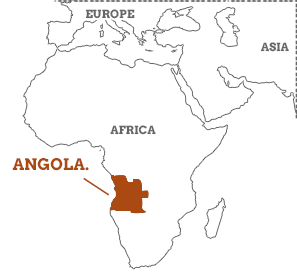Angola travel guide
Angola may take up a lot of space on the map of southern Africa, but it’s almost invisible to travelers. This former Portuguese colony is only just opening up to tourism, after 27 years of war left it cut off from the world. The war began after Angola won independence from Portugal in 1975 and continued until 2002. It was a civil conflict and a proxy Cold War. The Soviet Union, Cuba, South Africa and the USA were all involved and vied for mineral and oil resources.


Angola’s civil war kept the country closed to tourists, and inadvertently preserved the lifestyles of the many tribespeople living in the south of the country.![]()

Today, the conflict is over, but high prices, a tricky visa application process and almost zero infrastructure outside Luanda, the capital, mean traveling here is challenging. It’s an expedition rather than a vacation, organised by experts with local contacts who are able to tread respectfully into a world rarely seen by visitors. The privileged, intrepid few who come here discover desert oases and prehistoric rock art. They can see towns built under the Portuguese, Angola’s former colonisers and, most fascinating of all, visit tribespeople following traditional lifestyles.
Angola is…
a fascinating, unexplored chunk of southern Africa.
Angola isn’t…
an easy option. There’s barely any tourism or infrastructure.
Angola map & highlights
You’ll need to join an organised tour to visit Angola. These are always small group trips, lasting around 10 days, and typically only departing once a year, starting and finishing in the capital, Luanda. Tours rarely spend more than half a day or so here – enough time to see a few sights – before traveling into the southwest of Angola for a cultural tour that focuses on meeting ethnic groups and learning about their traditional lifestyles. Reaching this remote region involves an internal flight from Luanda to Lubango. From here, a 4x4 will transport you over rough roads and often trackless wilderness; expect some long and bumpy journeys.
Chibia
1. Chibia
Chibia is a center for the Muila people, known for their incredible body decorations. The Muila (also Mumuila or Mumuhuila) are semi nomadic and follow an animistic religion. The women are famous for their thick nontombi – mud-coated dreadlocks, and their mud necklaces, made in various styles. Each one of the necklaces worn by the women corresponding to a life stage, and they are never removed.
Luanda
2. Luanda
Lubango is the main city in southern Angola, sitting in a large valley overlooked by a statue of Christ and the Chela Hills. Lubango‘s center is dominated by the Art Deco style Cathedral of St Joseph, and the city has a relaxed feel. It’s the chief jumping off point for exploration of this region and its traditional tribespeople. Nearby, the Tunda-Vala, a breathtaking kilometre-deep gorge, offers views out across the region.
Lubango
3. Lubango
Lubango is the main city in southern Angola, sitting in a large valley overlooked by a statue of Christ and the Chela Hills. Lubango‘s center is dominated by the Art Deco style Cathedral of St Joseph, and the city has a relaxed feel. It’s the chief jumping off point for exploration of this region and its traditional tribespeople. Nearby, the Tunda-Vala, a breathtaking kilometre-deep gorge, offers views out across the region.
Namibe
4. Namibe
This quiet fishing town on the Atlantic coast is the capital of the remote Namibe Province. It was founded by the Portuguese in 1840, and is still home to fading relics of their empire. Most interesting of these is the cemetery, which has both Portuguese tombs and a curiously colourful collection of ornamental tombs, decorated in ‘Namibe style’, which is a fusion of Portuguese and African symbolism.
Oncocua
5. Oncocua
Oncocua is a former Portuguese settlement in the middle of a ‘cultural island’, where three different ethnic groups live: the Himba, the Mucawana and the Mutua. It’s a full day’s drive south of Lubango, passing villages belonging the Mugambue people. This is one of the most traditional places in southern Angola, and visitors are rare, although you can expect a warm welcome.
Tchitundo Hulo
6. Tchitundo Hulo
The prehistoric rock art here includes paintings of animals, plants and men, possibly dating back 20,000 years. Drive here from Namibe across desert landscapes and see bizarre welwitschia plants, which can live for 1,000 years. Enroute, stop in Virei, a center for the Mucubal people, whose women wear wicker-framed headdresses, iron anklets and an oyonduthi string around their breasts, which serves as a bra.
Angola safari vacation
Unique safari taking in Angola's remote national parks
From
£10450 to £11495
15 days
ex flights
Angola vacation, Expedition to Angola
Discover the amazing tribal traditions of southern Angola
From
£3949 to £3999
11 days
ex flights
Travel Team
If you'd like to chat about Angola or need help finding a vacation to suit you we're very happy to help.
1-866-821-6866
Call toll free
Calling from outside the USA












